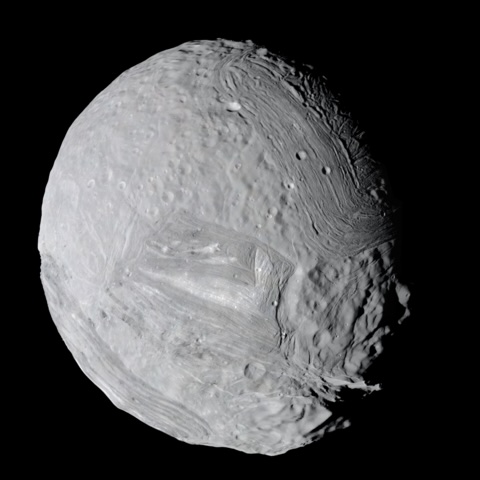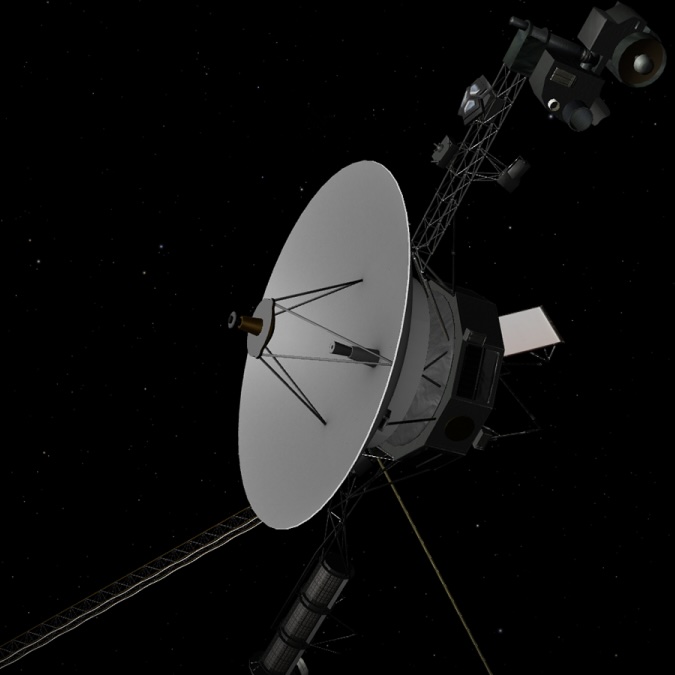1 day / second
0.5 AU
Miranda
Moon of Uranus
A chaotic-looking moon with an extremely varied surface featuring giant fault canyons up to 12 kilometers deep, unique "racetrack" patterns, and jagged terrain suggesting a violent past where it was broken apart and reassembled multiple times.
Key Facts
learn more | Wikipedia |
mass | 6.2930e+19 kg |
radius | 235.8 km |
semi-major axis | 129,390 km |
eccentricity | 0.001 |
inclination | 86.462º |
longitude of the ascending node | 0º |
argument of periapsis | 0º |
orbital period | 1.406 days |
surface gravity | 0.008 g |
discovery date | February 16, 1948 |
discovered by | Gerard Kuiper |
name origins | Named after Miranda from Shakespeare's play "The Tempest" |
dimensions | 468 kilometers in diameter |
albedo | 0.32 |
material composition | Primarily water ice and silicate rock |
density | Approximately 1.2 g/cm³ |
Parent Planet
Uranus
A cold, blue-green ice giant planet tipped nearly sideways on its axis, with a set of narrow rings and a family of at least 27 moons named after literary characters.
Spacecraft Visits
Voyager 2
Flyby
Launched in 1977, visited in 1986
Voyager 2 made its closest approach to Miranda on January 24, 1986, capturing high-resolution images of the moon's peculiar surface features including giant fault scarps, valleys, and distinctive coronae that suggest geological activity and possible resurfacing.











